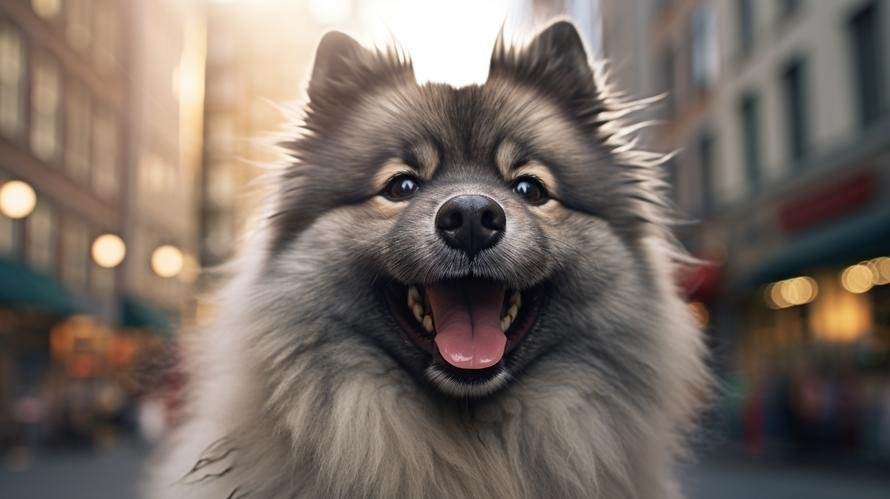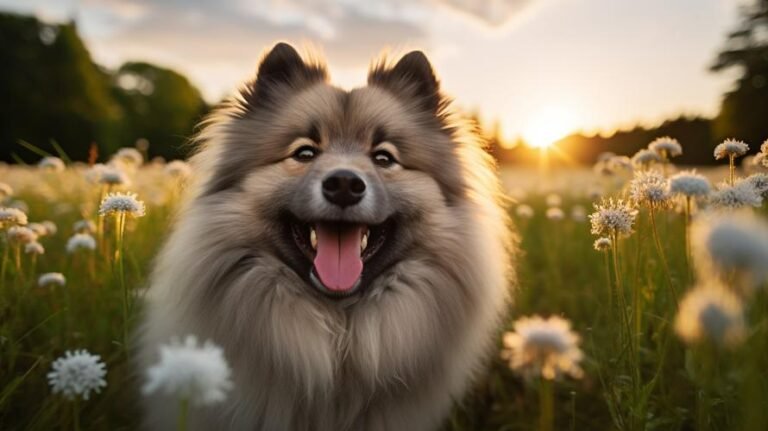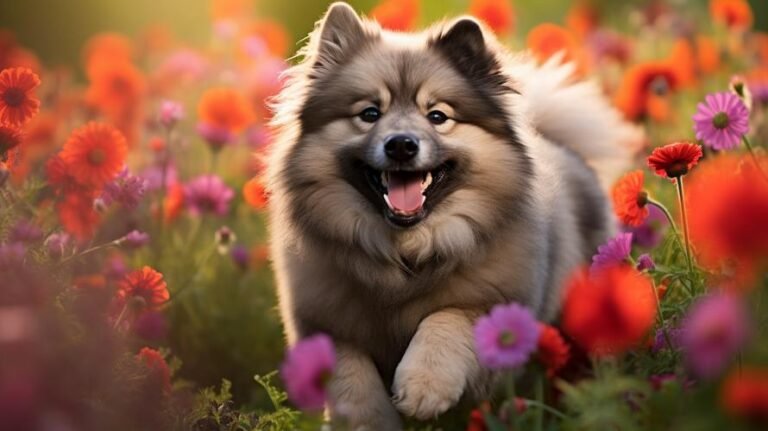Keeshonds are considered the “Smiling Dutchmen” of the canine world. Did you know their name is pronounced “Kayz-hond,” not “Keesh -hond”? Not everyone realizes that, and don’t feel embarrassed if you’ve been calling them by the wrong name all these years. But that’s not the only intriguing fact about these delightful dogs. They come with an impressive intelligence wrapped in their lush, silver-gray coat and are known for their happy-go-lucky nature.
If you’ve ever seen one, you couldn’t help but notice that distinct face, covered in fur, resembling a lion’s mane, bearing a forever smiling expression. True to their nature, they are not backbenchers and love being the center of attention. But no matter how perfectly picturesque they seem, anyone considering bringing a Keeshond pup into their family might be wondering, are these furry friends easy to train?
The answer is a resounding yes! But how and why they are easily trainable are the factors that we need to expand on. Let’s dig a little deeper into the behaviors and characteristics that make Keeshonds one of the easiest dogs to train.
One of the main factors contributing to their receptiveness to training is their high degree of intelligence. According to Stanley Coren, a canine psychologist and author of “The Intelligence of Dogs,” Keeshonds rank as the 16th most intelligent breed. This rank testifies to their ability to understand new commands and respond to obedience training.
Moreover, they have an exceptionally strong desire to please their owners. This trait is a magnificent aid during their training sessions, as they continuously seek their owner’s approval and happiness. From the simplest of commands like “sit” and “stay”, to the more complex ones like “roll over” or “fetch the newspaper,” this innate urge makes them diligent learners.
Another fascinating characteristic of Keeshonds is their extraordinarily sharp memory. Once they learn something, they remember it, which is why consistency is crucial during their training. A routine set for them will be remembered, greatly aiding in training and housebreaking.
However, training a Keeshond isn’t just a one-way street – it is not just about the dog learning commands or tricks. Remember the saying, “it takes two to tango”? In the case of training a Keeshond, it’s a relationship of shared understanding and meaningful interaction.
One of the best ways to successfully train your Keeshond is through positive reinforcement. Utilizing rewards, whether through treats, praise, or playtime, enhances the likelihood that your dog will repeat the desired behavior again. Besides, Keeshonds are food motivated, making treat-based training a walk in the park!
Yet, there’s a caveat – Keeshonds might be quick learners, but they also quickly comprehend when they’re being treated unfairly. They do not respond well to harsh training methods, where harsh words or punishments are used. If ever they feel badgered or threatened, their friendly demeanor will retreat, making the training more complex.
Here’s an interesting bit of trivia reflecting on their intelligence and trainability. Did you know that Keeshonds were historically the companions of Dutch bargees and used to serve as watchdogs? Their instinctive guarding nature was put to use by positioning them atop riverboats to watch for trouble. And they excelled at their roles superbly!
Their natural instincts paired with the right, positive training methodology can also make them capable service dogs and therapy dogs. As such, they can provide invaluable support and assistance to individuals with various needs and disabilities.
One crucial aspect to consider is that training a Keeshond or any dog in general, isn’t an overnight process. It takes time, patience, and consistent effort. Having a Keeshond puppy undergo training might be relatively easy compared to other breeds due to their inherent characteristics, but owners should not neglect their part in the training process.
Keeshonds are known for their attachment to their human family. They are social creatures needing human companionship and active interaction. Therefore, ensure that their training sessions are full of fun, interaction, and of course, loads of love!
In conclusion, Keeshonds are not just easy to train, but they make the whole process enjoyable with their friendly and eager-to-please nature. Training these fluff balls is not a chore but rather a rewarding journey of forming a bond that grows stronger with each shared learning. But remember – their training needs to be built on a foundation of love, care, respect – and loads of furry, friendly fun!
Whether you’re seeking a loyal family companion, an eager playmate for your kids, or a diligent service dog, with the right amount of love and leadership, you’re sure to get a “smiling partner” in a Keeshond. They may not be the key to happiness, but when guided and trained with love, a Keeshond might just be the key to a joyful and fun-filled companionship!



